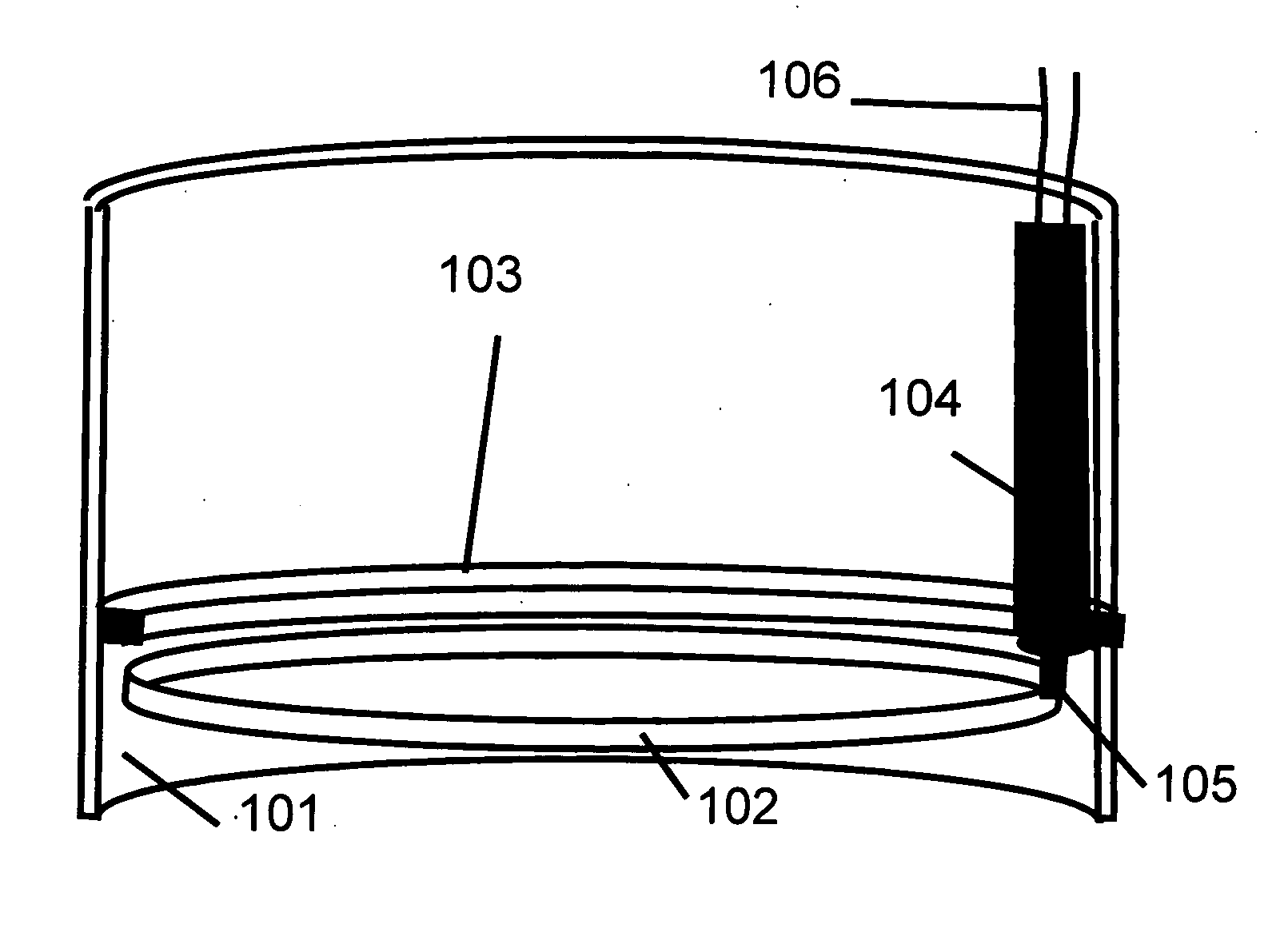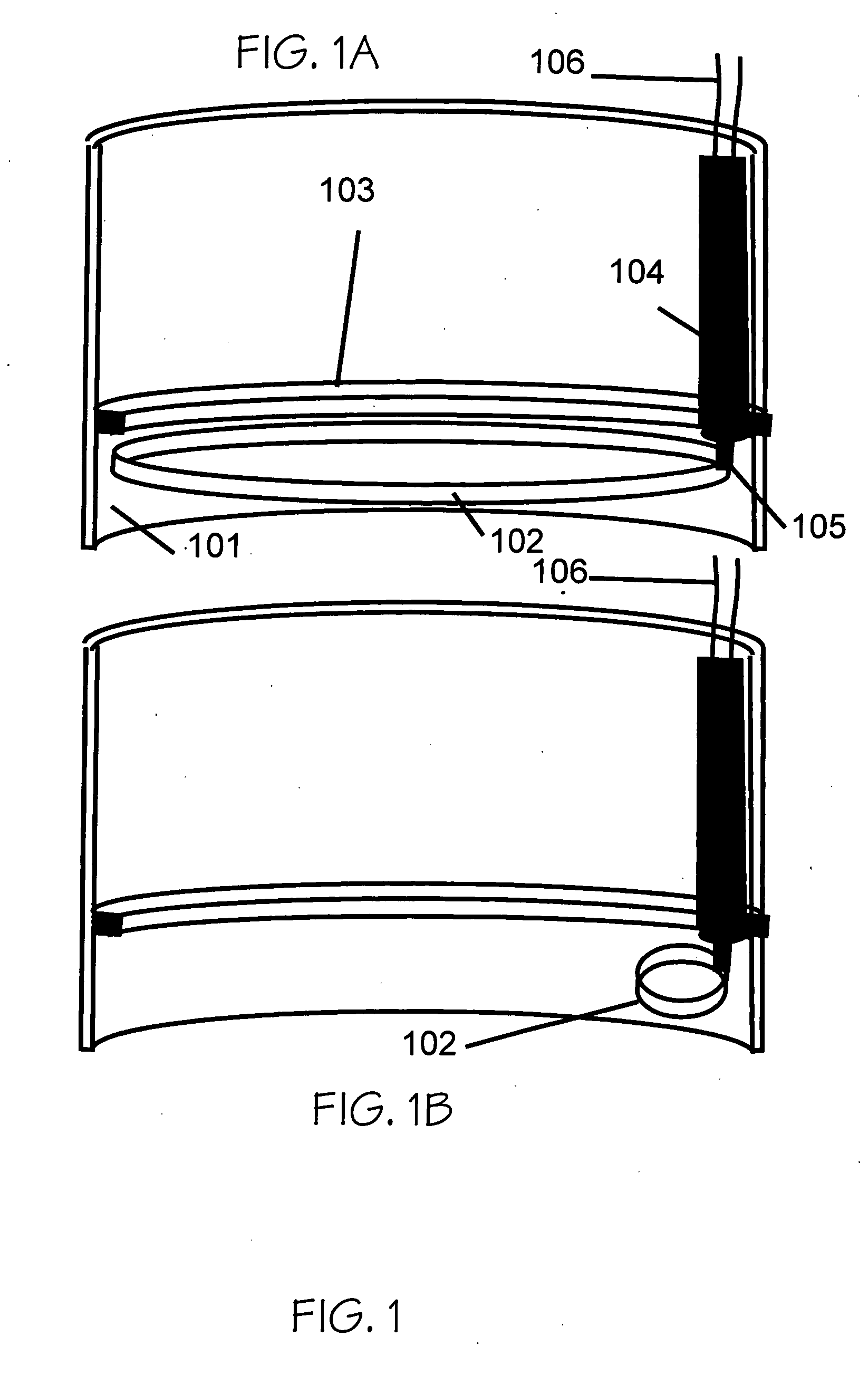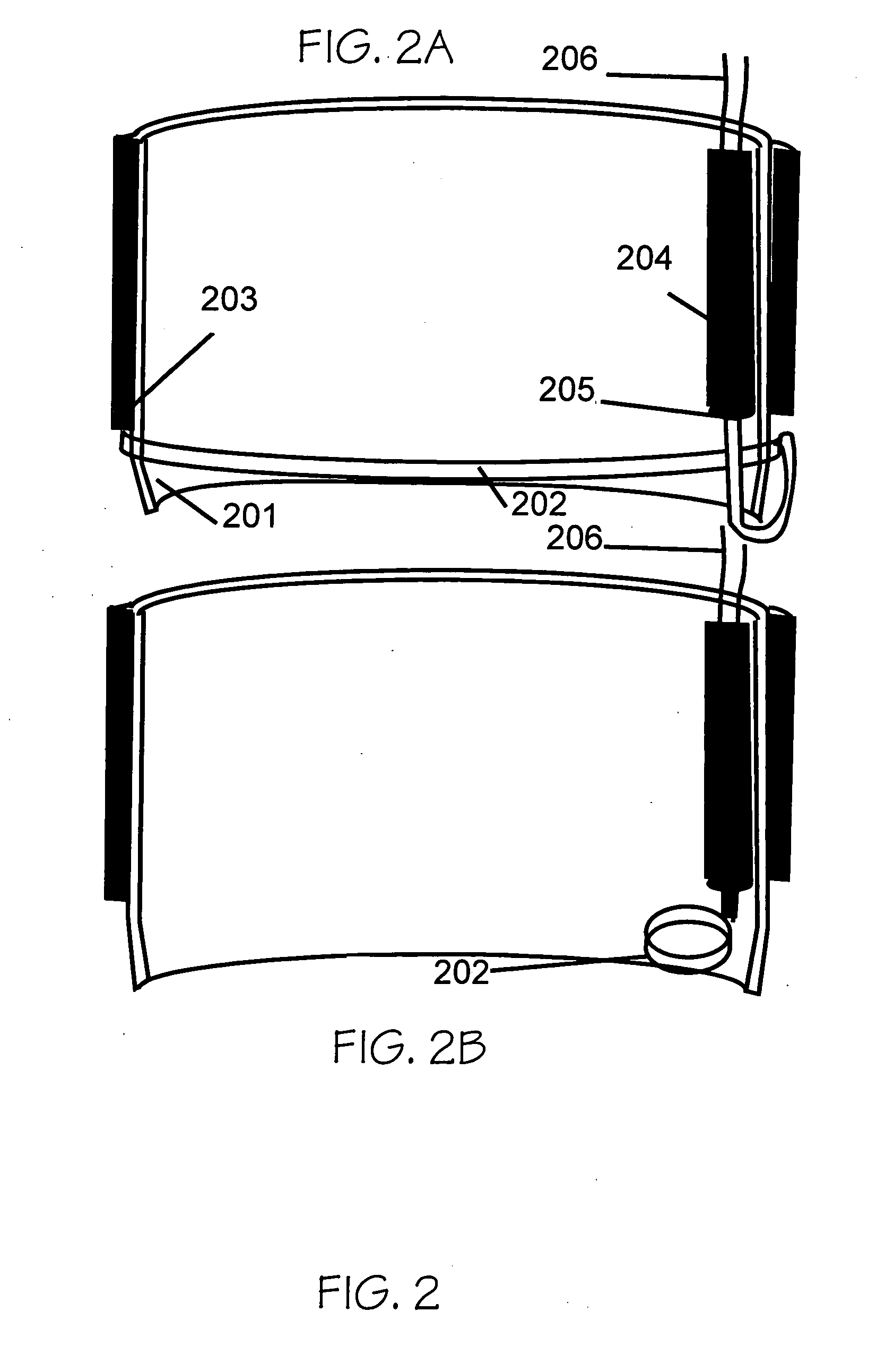Vascular closure methods and apparatuses
- Summary
- Abstract
- Description
- Claims
- Application Information
AI Technical Summary
Benefits of technology
Problems solved by technology
Method used
Image
Examples
example embodiments
[0036] The present invention can comprise a device to close puncture wounds caused by catheter procedures and especially angiography comprised cincture, snare, or noose-like device that introduction state resides in or on a sheath, and after either being expelled from the sheath or contracted spontaneously or by the use of a pulling suture loop, closes the cincture or noose, closing the wound. In order to allow the cincture to be placed, a gripping device is used that has tines that assumes a planar or conical or other shape, engages vessel wall by means of tissue hooks or penetrators, is pulled, and everts and holds the edges of the vessel wound or puncture so the the cincture can be placed.
[0037] The gripping device can have single or multiple hooks, arms, gripping members, or purchase or penetrating devices to engage and seize the vessel wall. Each hook or gripper can be a single or multiple hook, toothed, textured, penetrating, or gripping structure. The gripping device can hav...
PUM
 Login to View More
Login to View More Abstract
Description
Claims
Application Information
 Login to View More
Login to View More - R&D
- Intellectual Property
- Life Sciences
- Materials
- Tech Scout
- Unparalleled Data Quality
- Higher Quality Content
- 60% Fewer Hallucinations
Browse by: Latest US Patents, China's latest patents, Technical Efficacy Thesaurus, Application Domain, Technology Topic, Popular Technical Reports.
© 2025 PatSnap. All rights reserved.Legal|Privacy policy|Modern Slavery Act Transparency Statement|Sitemap|About US| Contact US: help@patsnap.com



